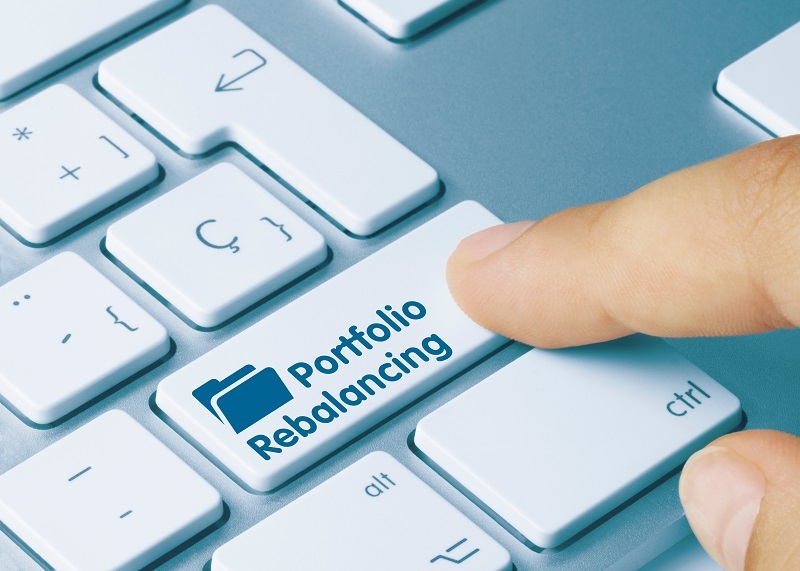
Knowing the way to rebalance your funding portfolio is an essential part of long-term wealth building. It enables you to live on route without losing the momentum you’ve labored difficult to achieve. Whether you’re adjusting for life changes or reacting to marketplace shifts, knowledge of how to rebalance your investment portfolio and a way to fine-tune your asset mix is fundamental to preserving profits and minimizing risk.
In this manual, we’ll stroll you through the artwork and technology of portfolio rebalancing. You’ll discover sensible rebalancing agenda guidelines, the way to manage rebalancing stocks and bonds, and smart techniques for adjusting asset allocation with self-belief.
The process of realigning your budget allocations to their specific or revised objectives is the essence of rebalancing. Your portfolio will fluctuate over time due to the different asset classes' performances. For instance, your portfolio may be overweight in shares if equities beat bonds in a certain year, putting you at unintended risk.
Knowing how to rebalance your funding portfolio ensures your funding plan reflects your financial goals, no longer simply the latest marketplace developments.
One of the most commonplace questions traders ask is, “When do I need to rebalance?” Timing plays an essential role in maximizing advantages without growing useless tax effects or transaction prices.
This technique follows a predetermined frequency:
Sticking to a rebalancing agenda facilitates removing guesswork. It’s especially powerful for passive traders or the ones handling retirement bills.
Instead of looking at the calendar, this approach focuses on going with the flow. When an asset's elegance deviates more than 5% from your goal allocation, for example, you can most effectively rebalance.
Your financial state of affairs can change substantially due to big life events like marriage, retirement, or inheriting money. In those situations, it's vital to adjust asset allocation to reflect your new aspirations.
Combining techniques is a great tip: Employ a hybrid approach in which you periodically test for threshold breaches and rebalance on a schedule.
By defining when to rebalance your portfolio, you stay proactive, reduce volatility, and maintain your investments operating correctly in the direction of your objectives.
Before diving into a way to rebalance your investment portfolio, it is important to recognize asset allocation. This is the aggregate of stocks, bonds, and other assets that matches your risk tolerance and time horizon.
Over time, your urge for meals may change. A 30-year-old can also begin with an 80/20 stock-to-bond ratio, but by age 50, a 60/40 split is probably greater suitable. That’s where adjusting asset allocation comes into play.
Portfolio rebalancing ensures your asset mix evolves together with your private and financial scenario—not just the markets.
Here’s a simple system for rebalancing without dropping portfolio momentum:
Use your brokerage or investment platform to drag a picture of your modern-day portfolio. Compare the percentages in each asset magnificence (e.g., 70% shares, 25% bonds, 5% coins) on your goal allocation.
Look for over- or beneath-weighted assets. If shares are 80% in place of your supposed 70%, it’s time to modify.
One of the most important aspects of rebalancing bonds and equities is this. Pay attention to taxes, costs, and market timing.
Take measured actions. If at all possible, use limit orders to keep costs under control and lessen disruption to the market.
Don’t “set it and overlook it.” Revisit your allocations periodically—even in case you’re no longer rebalancing at that second. Keep song of the way, often you rebalance, and the way it influences your returns.

Adopting a consistent strategy helps avoid making rash decisions. Here are some useful tips for rearranging your calendar that will help you maintain your discipline.
By sticking to your rebalancing time table tips, you’ll build investment discipline and keep away from the entice of emotionally driven trades.
The maximum commonplace portfolio approach involves balancing equities and stuck-earnings investments. Here’s the way to approach rebalancing stocks and bonds for premier performance and decreased risk.
Whether you're 25 or 65, rebalancing stocks and bonds ensures your investment blend matches your lifestyle level and appetite for food.
Tax performance topics. Rebalancing can create taxable activities, especially in non-retirement accounts. Here are some recommendations to decrease the tax hit:
Even if taxes are unavoidable, staying on target with the way to rebalance your investment portfolio can be worth more in the long run than delaying because of tax concerns.
Managing a diversified portfolio doesn’t have to be overwhelming. Here are the equipment and sources to help with rebalancing:
Choose the device that aligns with your goals, tech comfort, and stage of involvement.
Even experienced buyers slip up. Here’s what to look out for:
Understanding a way to rebalance your investment portfolio isn’t just about following formulas—it’s about considerate, steady management.
Rebalancing isn’t about chasing performance. It’s approximately preserving a disciplined, personalised funding strategy. By knowing how to rebalance your investment portfolio, staying devoted to your rebalancing agenda hints, and carefully dealing with rebalancing shares and bonds, you ensure your portfolio reflects your hazard tolerance and goals—regardless of what the markets are doing.
The key isn't just to rebalance, but to rebalance without dropping momentum. Done properly, it is able to improve hazard-adjusted returns, reduce losses, and come up with peace of mind—particularly for the duration of turbulent times.
So whether you’re investing for retirement, a first-rate purchase, or financial freedom, adjusting your asset allocation often guarantees you’re constantly one step closer to your goals.
This content was created by AI